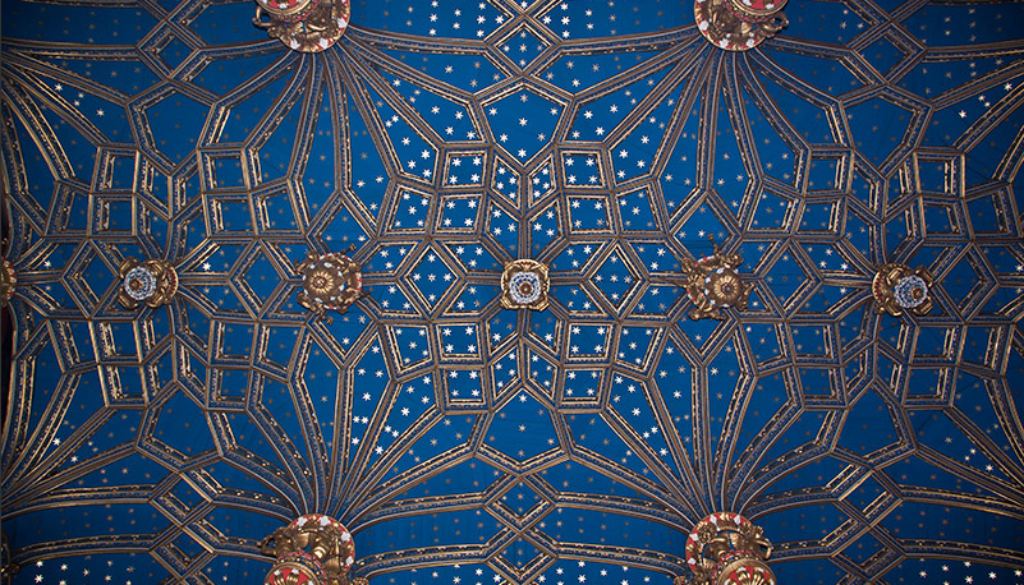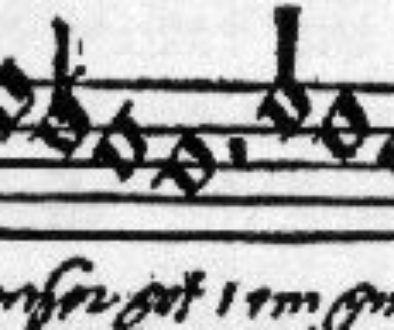Stars and our Worshipful Gaze
Because of the belief that a church is a median between heaven and earth, Christians have regularly painted stars on on the ceilings of churches. For instance, stars are a major symbol of Eastern Orthodox architecture, and they were even part of church design in the early Anglican church, as evidenced by the ceiling of the Chapel Royal at Hampton Court Palace. These stars helped Christians imagine the heavens when they looked up to worship.
Even in modern times, as our churches have become simpler and perhaps less numerous, the actual stars continue to inspire awe of creation and worship of God. For instance, on Christmas Eve in 1968, after a year of unrest and assassinations on earth, the astronauts of Apollo 8 read the Genesis Creation account from space as their capsule orbited around the moon, the first human-created vessel to do so. Broadcasted around the world, the reading was the most watched television program in history, so successful that the astronauts won an Emmy that year.
Six months later, the first liquid poured out and the first food eaten on the moon were communion elements, self-administered by Presbyterian astronaut Buzz Aldrin, the second man to walk on the moon. There, in the lunar one-sixth gravity, the wine curled up the side of the cup. Aldrin later reflected to Time Magazine, “At the time I could think of no better way to acknowledge the enormity of the Apollo 11 experience than by giving thanks to God.”
As the 20th Century continued, the stars continued to inspire majesty and awe even in secular contexts. Perhaps nowhere have stars been more romanticized in recent American culture than by Carl Sagan in his 1980s television program Cosmos. On the show, (aided by choice 1980s computer graphics) Sagan proposed that technology, not God, had been human being’s salvation for millennia. Yet his poetic narration about the heavens instilled a curiosity and beauty about the stars that lifted them out of sterile science.
In the Bible, David uses the heavens to instill worship. For Abraham, God uses the multiplicity of the stars to demonstrate his promise and unbelievable blessing to a wandering nomad. For the Magi, who traded in the movement of stars, God uses a single one to quite literally lead them to Jesus. How compassionate is a God who uses mediums that inspire to lead us back to the promise of his Son.
Despite cultural unmooring from the Christian faith, stars remain objects that have the potential to lift the human heart to heaven just as they did with Abraham, the Magi and the early Christians and astronauts. As we enter into Advent, how is God calling you to understand and worship him through awe-inspiring, unexplored environments like outer space?
Carrie W. Montalto
Restoration Member
RestoArts




November 30, 2013 @ 8:41 am
This is beautiful. I am so excited to see how stars are a part of our waiting in Advent. Thanks RestoArts!
December 1, 2013 @ 4:35 pm
It reminds me of the beautiful Advent hymn, “Creator of the Stars of Night.” Well written, Carrie. Have a Blessed Advent, Restoration.